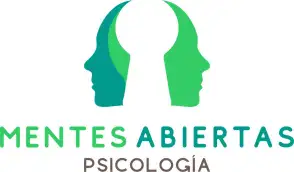Social interactions are a fundamental part of human life. From an early age, we learn to interpret gestures, emotions, and thoughts of others to navigate society. However, for some people, this process is not as intuitive. Autism and Attention Deficit Hyperactivity Disorder (ADHD) are two neurodivergent conditions that can affect how a person understands and responds to social stimuli.
How does social cognition work in these cases? What are the differences and similarities between both conditions? In this article, we will explore what current research tells us about social cognition in autism and ADHD.
What is Social Cognition?
Social cognition is the ability to process, interpret, and respond to social information. It consists of several elements, including:
- Theory of Mind (ToM): The ability to understand that other people have thoughts, emotions, and intentions different from one’s own.
- Emotion recognition: Identifying facial expressions and tone of voice in others.
- Social perception: Accurately evaluating other people's intentions and behaviors.
- Empathy: Understanding and sharing the feelings of others.
Difficulties in any of these aspects can affect the way a person interacts with others.
Social Cognition in Autism
Autism has been one of the most studied conditions in relation to social cognition. Since the 1980s, with experiments on Theory of Mind, it has been identified that many autistic people have difficulties attributing thoughts or intentions to others.
Some key findings about social cognition in autism include:
- Difficulties in implicit mentalizing: While many neurotypical people can automatically infer others' mental states, autistic people may need additional cognitive effort to do so.
- Variable emotional recognition: Some autistic individuals struggle to identify emotions in faces or voice tone, though with practice they can develop strategies to improve this skill.
- Hypersociality or hyposociality: Some research suggests that social processing in autism is not simply a "deficit" but can manifest in different ways.
Social Cognition in ADHD
Unlike autism, research on social cognition in ADHD is more recent. Differences have been found in how people with ADHD process social information, for example:
- Difficulty in emotion recognition: Some people with ADHD may have trouble interpreting facial expressions and voice tones.
- Impact of impulsivity on social interaction: Difficulty in controlling impulsive responses can lead to misunderstandings in social situations.
- Intermediate Theory of Mind: In situations that require attentional control, their performance tends to be affected.
Differences and Similarities Between Autism and ADHD in Social Cognition
AspectAutismADHDTheory of MindMore affected, especially in implicit tasksCan be affected, but usually less severeEmotion recognitionDifficulties in interpreting facial expressions and prosodyMore subtle difficulties, influenced by inattentionSocial perceptionSometimes hyper-precise or atypicalCan be affected by impulsivity and distractionEmpathyCognitive empathy is more affected, but emotional empathy is preservedMay have difficulties in emotional regulation and appropriate social responsesCan Social Cognition Be Improved?
There are several strategies to improve social cognition in people with autism and ADHD, including:
- Social skills-based interventions: Structured programs that teach emotion recognition, mentalizing, and conversational skills.
- Technology-based therapies: The use of virtual reality and artificial intelligence programs.
- Environment-centered therapies: Approaches that improve the bidirectionality of communication.
Wrapping Up
Social cognition in autism and ADHD is a fascinating area of research that helps us better understand differences in how people process and interact with their social environment. While there are challenges, there are also many opportunities to improve communication and social inclusion. Rather than seeing these differences as "deficits," it is essential to recognize them as part of human diversity and find ways to build a more accessible and understanding world for everyone.
Author: Psicólogo José Álvarez


